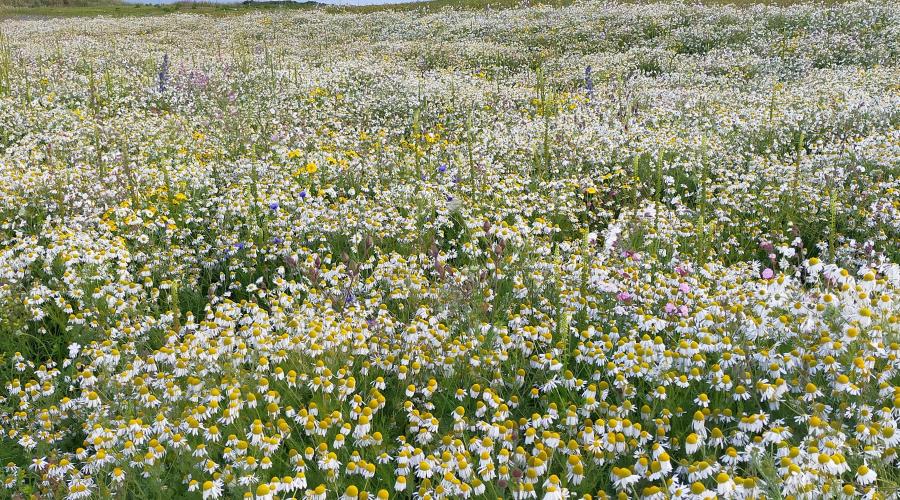
No ordinary project
What sort of things has the Community Engagement Fund helped support?
Oh, so many things. The funding has enabled us to plant thousands of trees, develop a heritage trail app, support trainee positions to encourage volunteer engagement and wildlife recording, and buy a plethora of recording equipment to introduce people to wildlife recording as a tool and something to enjoy. All of this links in with the four themes the Garnock Connections partnership was based around – namely, community, access, habitat and knowledge.
It is a four-year project which was launched in mid-2018 and would have finished in March 2022, but with the pandemic having hit the ability of communities to travel and get out and about we have managed to extend the project to include an extra summer to focus on engagement. Which was great as it gave people a chance to get out and about, and enjoy the many things the project had put in place. So things like helping people learn meadows and pollinators, for example, was able to happen in what was the most active season for insects.
You seamlessly combine natural and cultural heritage. How is that achieved?
We were always clear that we aimed to make it easier for communities to learn about this area’s natural and cultural heritage. So where we encouraged folk to follow a route out into the landscape that may feature an old castle or a medieval tower we also looked to weave in opportunities to absorb information on nature either visually or through wildlife recording. The fund helped us put on wildlife recording training sessions, and this helped us increase people’s awareness of the nature around them and improve their knowledge of what they have on their doorstep.
One thing I am really pleased about is that people often entered our workshops concerned that they really needed to be a scientist or a graduate to get the most out of our sessions. Hopefully we have reassured them that this definitely isn’t the case for them to enjoy identifying wildlife.
The pandemic clearly disrupted your plans. What are your reflections on that?
Over the past 18-months people have not been able to get out and about in the way they used to, and that was a blow not only to our progress but for some people being stuck inside for a long time hit their confidence when it came to re-joining groups. However, on the plus side we did so much online, and this was a bonus. The pandemic halted our workshops outdoors but by going on line we helped not only keep interest alive but offered an opportunity for folk who maybe couldn’t have got to the outdoor workshop in any case. We developed our App and this means that when people go on a walk now they can add their route, their pictures, and simply share what they have enjoyed. Nevertheless, I’d be the first to concede that there have been pros and cons to things being online. Not everyone is engaged in the same way.
When it came to explaining the role of meadows or the importance of pollinators, being online offered some plus points. We bought wildflower seeds to create meadows, which was great for biodiversity, and let us tie in with some of our partners such as the Scottish Wildlife Trust and their Nectar Networks project. So we began by meeting volunteers and community groups who shared a passion and an interest in helping wildlife.
The coronavirus crisis halted those face-to-face meetings but by harnessing online approaches our volunteers and community groups were able to engage virtually or digitally, whenever it suits them. The great thing about having things on line is that you can record them so we now have a YouTube channel where all the workshops are available and people can go online now and re-watch at their leisure. We have made good use of our resources on our website too.
It has helped us explain the value of wildflower meadows to a larger audience than we could have met face-to-face. Meadow creation can be a contentious issue for some. So if people see the meadow in its early or late stages and think “What’s that? It’s a mess, they are letting things go here, where is my neatly-mown grass’. We can counter that by explaining and posting about the benefits of the meadow. An online workshop about something familiar like bumblebees can be a huge bonus as we explain what they need to survive, explain that they aren’t the only pollinators, and open up a wider discussion. So we can set folk off on a journey all from one online workshop.
If you were to pick out a highlight?
When I joined the project, everything looked great on paper. But when things happen and you see it on the ground for real it is even better. You get an awful lot more from a project like this than is just written down on paper. All the people that engage with it confirm that, they seize the opportunity to collaborate and take good elements from one project into another project. It really is Garnock ‘Connections’ because no project is truly stand alone, the four interconnecting themes dovetail well. So it’s that coming together on a range of activities and approaches that is most pleasing.
You have opened up the Garnock area for many people. That must be satisfying.
Yes, our All Abilities Access is a wonderful part of that drive. It’s improving access to the wider countryside for those with mobility issues, and people in wheelchairs, helping them get beyond tarmac paths. Our new wheelers allow folk to access the beach at Ardrossan and Saltcoats, and get off-track at Irvine’s Eglinton Country Park. The app can support this too, by letting people share routes and experiences.



